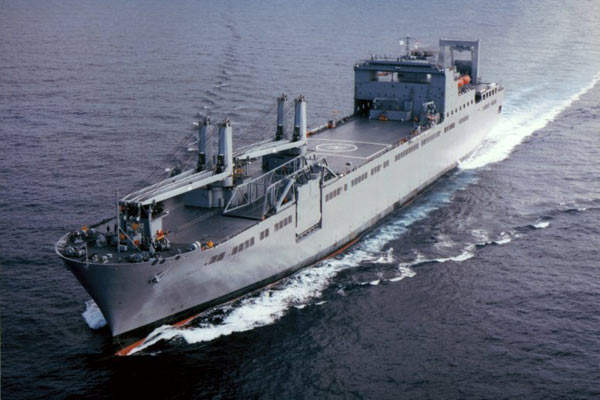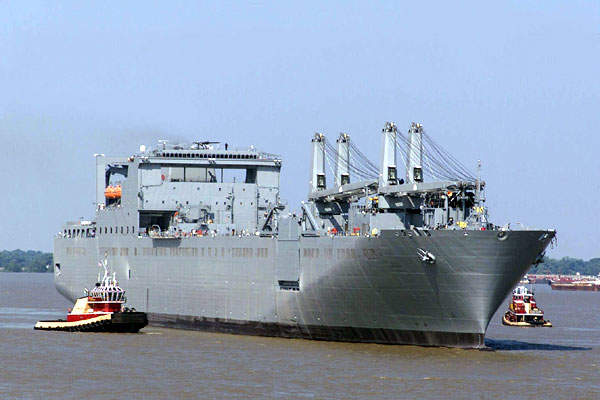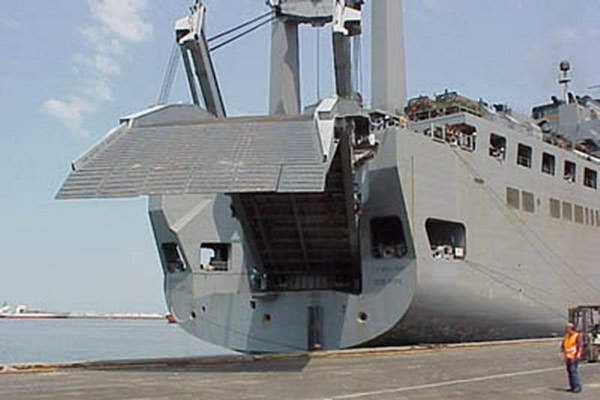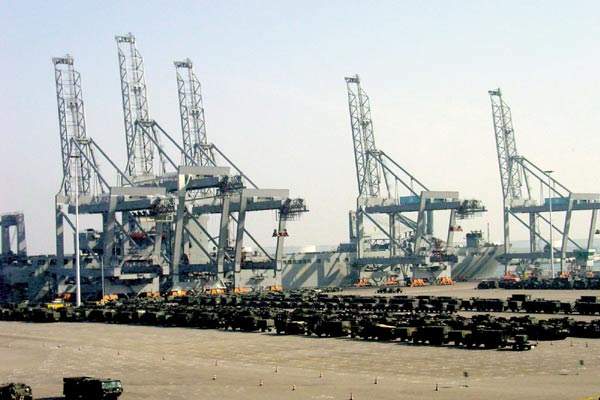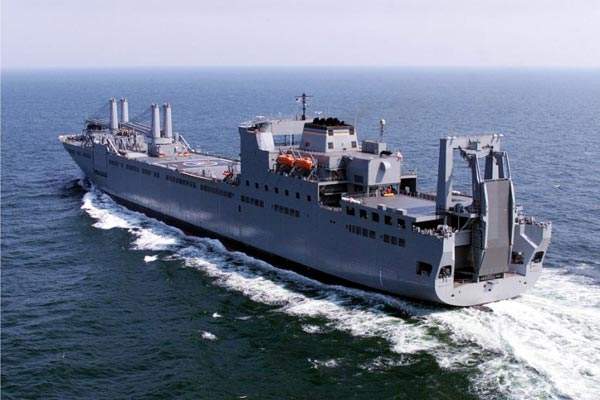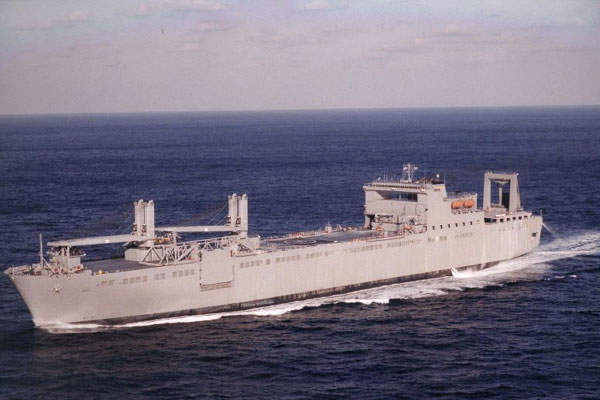The Bob Hope Class is one of four classes of US Navy large, medium-speed, roll-on roll-off (LMSR) vehicle cargo (T-AKR) ship. The ships are owned and operated by the United States Navy’s Military Sealift Command (MSC).
MSC operates approximately 110 non-combatant, merchant mariner-crewed ships that replenish US Navy ships, conduct specialised missions, strategically preposition combat cargo at sea around the world and move military cargo and supplies used by deployed US forces and coalition partners.
Bob Hope class construction and development
A contract was awarded to Avondale Industries in New Orleans in September 1993 for the first of the Bob Hope Class ships and options for an additional six ships were exercised over the following four years. USNS Bob Hope (T-AKR 300) was launched in March 1997 and delivered to MSC in November 1998.
Avondale Industries is now Northrop Grumman Ship Systems, Avondale Operations.
The other six ships of the class, USNS Fisher (T-AKR 301), USNS Seay (T-AKR 302), USNS Mendonca (T-AKR 303), USNS Pililaau (T-AKR 304), USNS Brittin (T-AKR) 305 and USNS Benavidez (T-AKR 306) were delivered between 1999 and 2003.
The Bob Hope Class ships are similar in construction to the Watson Class LMSRs (T-AKR 310 to 317) built at NASSCO in San Diego, except they are diesel powered rather than gas-turbine powered.
The full load displacement with crew, supplies, fuel and cargo is 62,000t. The light load displacement is 35,500t. The length, beam and draft of the ship are length 289.1m, beam 32.3m and draft 11m.
Military Sealift Command operations
The ships are operated by 30 civilian mariners who work for a private company under contract to MSC and up to 50 embarked military personnel who monitor and maintain the equipment being transported.
The ships are maintained in reduced operational status, which means they are operationally ready in four days. The primary mission of the Bob Hope Class LMSRs is to transport shore-based combat equipment and supplies to US forces overseas in support of wartime and humanitarian operations.
Operational service of USNS Bob Hope has included the delivery of equipment to the Balkans and to Iraq. The USNS Bob Hope was deployed to deliver equipment for peacekeeping operations in Kosovo in 1999. The ship arrived at the deep sea port in Thessaloniki in northern Greece on 29 June 1999, just six days after departing from Bremerhaven, bringing 119 shipping containers and 1,345 individual items of equipment. The discharge of its cargo, including M1 Abrams tanks, was completed by 1 July 1999 for forward transportation by land to Skopje, Macedonia and then on to Kosovo.
Six of the Bob Hope Class ships have delivered tanks, fighting vehicles and other supplies needed by the US Army in Operation Iraqi Freedom. By July 2003, the USNS Bob Hope had been deployed for 81 days in the Arabian Gulf and had transported 38,912t of gear including combat gear in support of Operation Iraqi Freedom and water purifiers and construction equipment to help in the rebuilding of Iraq.
Cargo
The Bob Hope Class ships have 318,000ft²of cargo space plus 70,000ft²of deck cargo space. The ship is capable of carrying up to 1,000 wheeled and tracked military vehicles and other cargo.
The ship has a stern slewing ramp and side access areas for fast and easy roll-on roll-off operation. It is also fitted with two twin cranes rated at 55t for fast and efficient lift-on and lift-off.
Propulsion
The Bob Hope Class ships are powered by four Colt Pielstick 10 PC4.2 V diesel engines generating 47.89MW. The engines drive two shafts with controllable pitch propellers. The adjustable blade pitch allows the ship to sail at optimum fuel efficiency for the varied speed, loads and sea states.
The fast response to the control and direction of thrust contributes to high manoeuvrability which is useful for moving in ports and in berthing where docking tugs may not be available.

